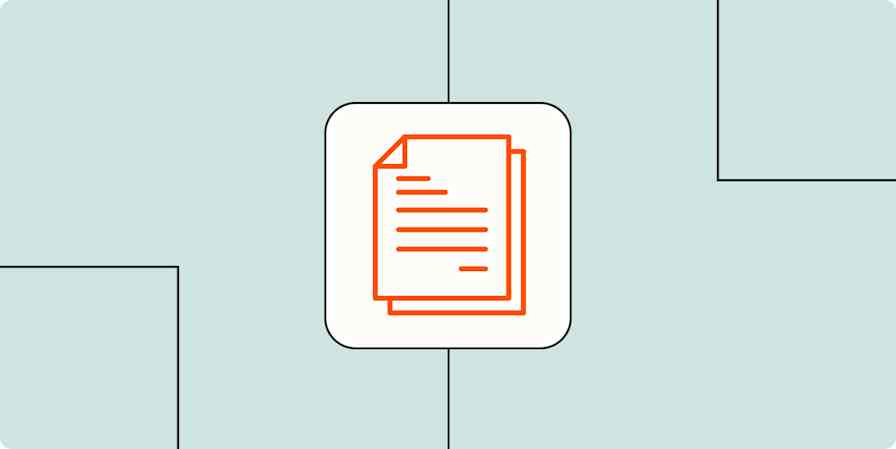Communicating at work can be a balancing act—you need to get things done, but everyone communicates differently, and you don't want to come off as aggressive (when you're trying to be clear) or feeble (when you're trying to be kind).
The assertive communication style is intended to solve these issues, and I've been working on using it in my own work. Assertive communication has helped me develop better relationships with my clients while setting clear boundaries. And over time, it's become second nature. This guide shares how you can practice assertive communication in your work, too.
Table of contents:
What is assertive communication?
Assertive communication is a communication style that allows you to state your thoughts, feelings, and needs clearly and respectfully. It's in contrast to passive or aggressive communication—the goal of assertive communication is to explain what you want or need in a way that's confident but doesn't incite conflict.
Say, for example, you're waiting for a response from your colleague that's holding up a project. Here's how each communication style might present:
Passive communication: "Did you get a chance to look at this?"
Aggressive communication: "I'm still waiting for your feedback. You're holding up the entire project—everyone's waiting on you."
Assertive communication: "I realized that this project is running behind a few days. It's important that we keep momentum going so we can meet the deadline of March 31. When will you have time to provide feedback so we can get momentum back?"
Benefits of assertive communication
Being an assertive communicator is good for everyone—you, the person you're communicating with, and everyone else who's observing your communication (which can be a lot of people if most of your communication is on a team chat app like Slack).
Reduces conflict. It's easy for words to be misinterpreted (especially if they're written, not spoken). Assertive communication removes the demanding tone, while ensuring that others don't walk all over you. That means less tension in the workplace because clarity and respect are the priorities.
Increases productivity. Passive phrases like "I think we might want to brainstorm more on this project" can cause people to brush off what you're saying, and that can lead to extra time spent waiting for a response or the thing you need. When you opt for assertive phrases like "I'm working on this project, but I need some help with X. Do you have 15 minutes today to chat through it?" you're more likely to get things done more efficiently.
Prevents burnout. Assertive communication can be great for setting boundaries because it takes the people-pleasing tendencies out of your communication. You're more likely to be clear about your own needs, which can help prevent burnout in the long run.
Improves collaboration. Assertive communication helps you voice your opinions, express concerns, and ask for clarifications in a group setting when you might otherwise not do so. This leads to better collaboration, especially if others take your cue and communicate assertively with you as well.
How to communicate assertively at work
Keen to become a more assertive communicator at work? Here are eight tips to practice assertive communication in a professional setting.
1. Know what you need
To communicate what you need, you have to know what you need. Start by ironing out the ideal scenario and what's required to make that happen. Here's the framework I rely on to make this clear to myself before communicating:
What: What do I need from this person?
When: Is there a deadline or ideal timeframe that I need it by?
Why: Why do I need this, or why is it important?
Where: Where do I need this? (e.g., a specific app or communication channel)
Let's put this into practice. Say you want to schedule a meeting with your manager to discuss a pay review. It can be an awkward situation—you don't want to come off as aggressive, but if you use passive language, you might be less likely to get the meeting.
The framework might look like:
What: I need a meeting with my manager to discuss a pay review
When: By the end of the month
Why: I was promised annual pay reviews when I took the job and I haven't had one yet
Where: We work remotely, but it's a sensitive topic, so Zoom would be the best option
2. Set your boundaries
Part of assertive communication involves being clear with boundaries. If you communicate passively, it's possible people will steamroll you and not respect (or even know) your boundaries. And if you communicate aggressively, it will come off as though you think your boundaries matter more than other people's.
For example, you might have a boundary that you don't go to meetings after 4 p.m. If someone schedules a meeting with you during a time you've blocked off, instead of responding with a snappy message to "check my calendar next time" or just forgoing your boundaries in fear of sounding inflexible, you could send something like this:
"Thanks for sending this meeting through. I'm available between 8 a.m. and 4 p.m., but I prefer to keep the afternoons free for deep work. Are you free between those hours anytime this week?"
It's clear and respectful, and that's what assertive communication is all about.
3. Balance assertiveness with empathy
It's always possible that your needs might interfere with someone else's. While it's important that you communicate what you need, it's also important to remember that there might be things you're not aware of on the other side.
For example, instead of saying, "This task is taking too long—it needs to be done by tomorrow," you can say, "I know that this is a detailed task, but we need it completed by tomorrow to stay on schedule. Are there any blockers that I can help remove?"
The last sentence there is a tip I learned from one of my previous clients. By asking whether there were any blockers she could remove to help me work through a project, it made me feel like we were working together. That went a long way in strengthening the relationship.
4. Practice assertive language
Assertive language is a skill that can continuously be strengthened. I've found it's helpful to have a kit of phrases you can lean on.
Write common situations you encounter at work and how you typically default to communicating them. Then, play around with the language to make it more of an assertive ask or statement.
Here are some examples:
"I was wondering if maybe you could help me?" > "Can you help me?"
"I don't want to bother you, but can you give me some feedback if you get the chance" > "I'd really appreciate your feedback on this. Can you share your thoughts?"
"I don't mean to sound pushy, but we ideally need this done this week." > "This is due with the client this week. Are we able to meet the deadline as is? If not, what can I do to help get us there?"
You might stick a Post-it note above your computer screen to act as a regular reminder to check in on your phrasing. Even better: use a chatbot to "translate" your drafted message into assertive communication. You'll always want to do a human sense-check, but it can help you figure out how to frame your message more assertively and break those bad habits.
To help, I built a bot using Zapier Chatbots that's trained to be an expert on assertive communication. Input what you want to say, and the bot will help you phrase it more assertively.
5. Use "I" statements instead of "you" statements
No one wants to hear "you're doing this wrong." Assertive communication requires you to take accountability. That means replacing "you" statements with "I" statements that put the focus on you, rather than the person you're talking to.
You need to be sure you don't veer into passive-aggressive territory here—it's important to truly take ownership.
For example: instead of "You're not doing that the way we'd discussed," you might say, "I think it would work better like X, the way we'd discussed." And instead of "You're late on this project. You need to finish it by tomorrow," you might say, "I noticed the deadline for this project has passed—what can I do to ensure it's completed by tomorrow?"
6. Follow the BLUF
Bottom Line Up Front (BLUF) is a military communication method that puts the most important message first. It's a great model for assertive communication—no one has to dig through unnecessary details to understand what you need.
For an in-person meeting, this doesn't mean cutting all the small talk—that small talk can be important for relationship-building. But once you get into the meat of the conversation, start with the bottom line. Let people know you'll be happy to offer more context, but you want to lead with what matters most.
BLUF facilitates rapid decision making and helps people deliver a message in fewer words. Putting the Bottom Line Up Front is a great way to define the key message. It’s the one thing your audience needs to know or cares the most about.
Chris Fenning, author of The First Minute: How to Start Conversations That Get Results
BLUF is especially important in written communication, like email. For example, if you need to extend a project deadline, instead of opening with a recap of the project work so far, put your ask in the email subject line. Something like "Can we push back the deadline for X?" could work. Then, in the body of the email, summarize your ask before you jump in with the specifics: "The project will be delayed by 3 days because XYZ." After that, you can offer more context, like what you're doing to catch up.
7. Don't let negative emotions take over
It's easy to let negative emotions dominate, especially if you're in a high pressure or awkward situation.
Maybe you've repeatedly reminded someone of your boundaries, and they continue to disrespect them. Or maybe you're frustrated because an important project is running behind by no fault of your own. A knee-jerk response is never a good idea: when tensions are high, words can easily flow out, and even if you mean them with good intentions, the negativity will shine through.
If you're feeling those negative emotions, take a few minutes to regroup. Get clear on what you want, consider how you can communicate it assertively, then respond.
8. Be open to compromise
You've been a professional long enough to know that you won't always get exactly what you need when you need it. That's why it's helpful to have both a best case and a backup in mind. For example, if someone asks whether you can meet at 1 p.m. for a time-sensitive project, but you have meeting-free afternoons, communicate that you'll do it as a one-off:
"I don't usually take meetings in the afternoon, but I'm happy to make an exception because this is an urgent project. In the future, let's plan to stick to meetings before noon."
This shows you're flexible—and you know the work world doesn't revolve around you—but also also reminds your colleagues about your own needs.
Use AI and automation to improve communication
Assertive communication is just like any skill: the more you practice, the easier it becomes. Start small, maybe testing the new language and phrasing on a few trusted colleagues until it becomes more comfortable. You'll start to build that assertiveness muscle and communicate more confidently at work.
You can also use technology to help. For example, the AI chatbot I included above can help you translate your communication to be more assertive, or you can use a text expander to help you say no. You can also automate more routine communication, like email and chat reminders. Learn more about how to automate your inbox.
Related reading:









